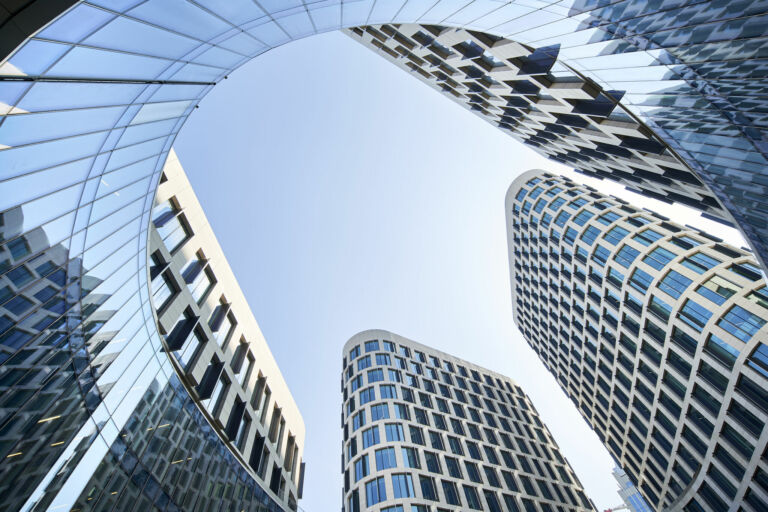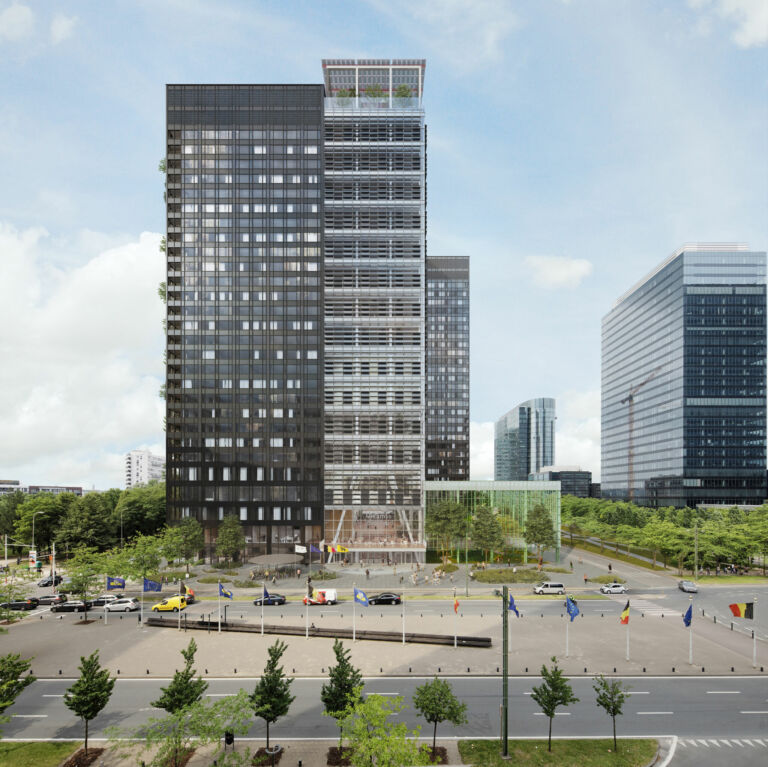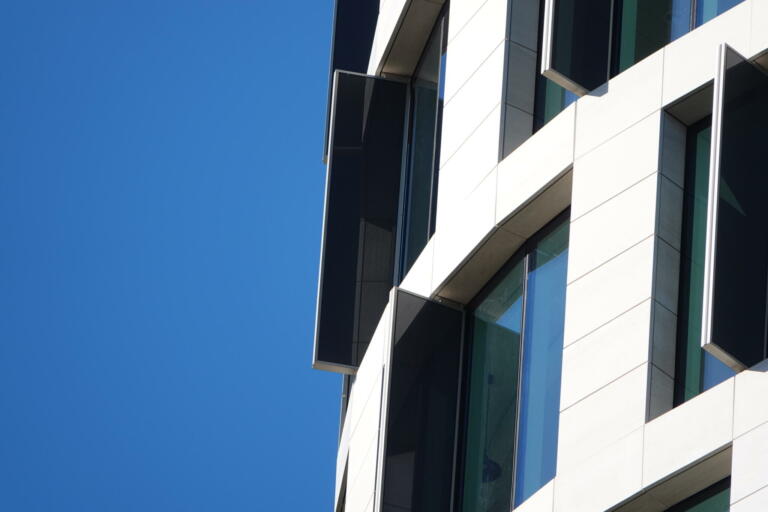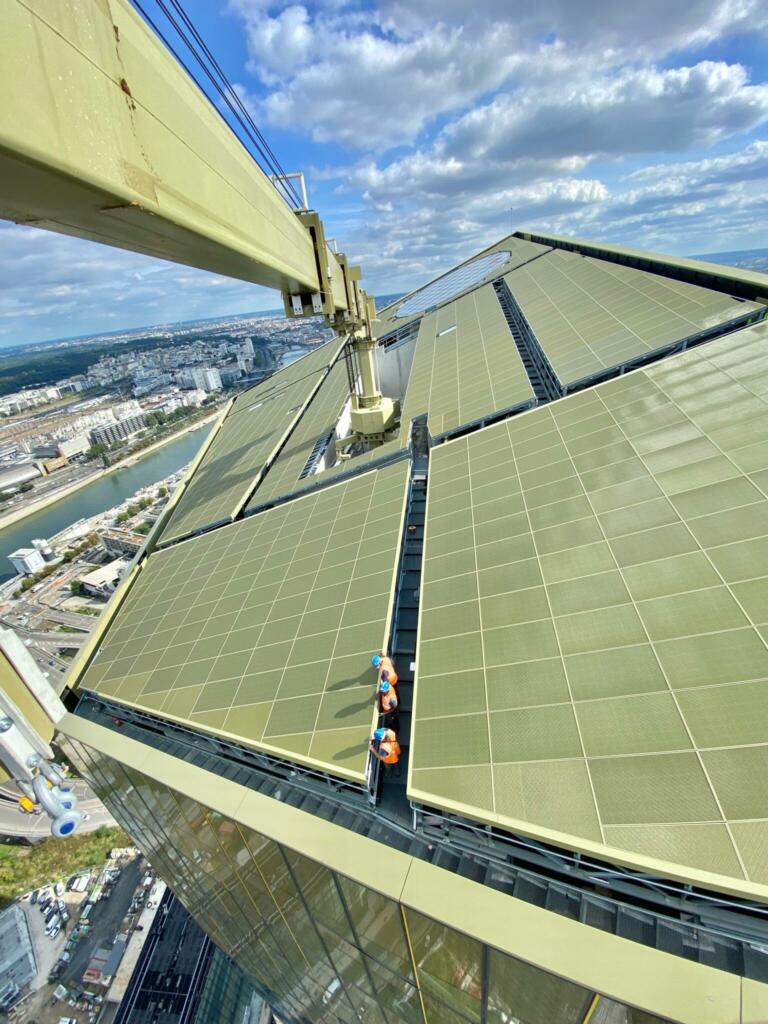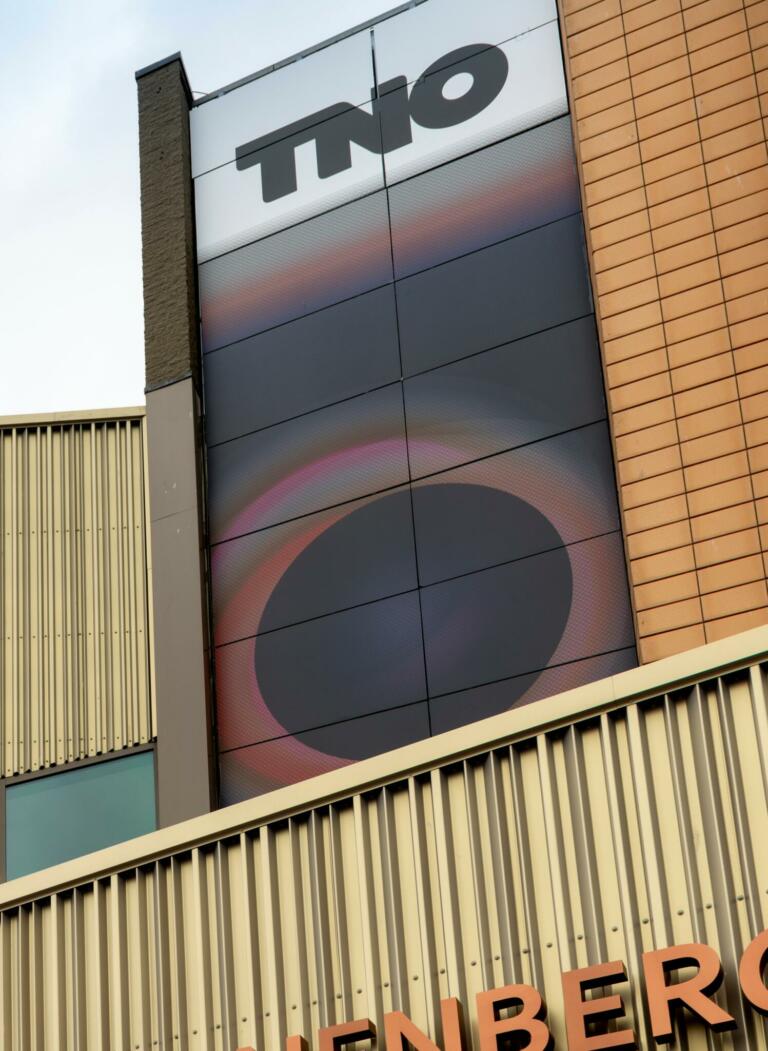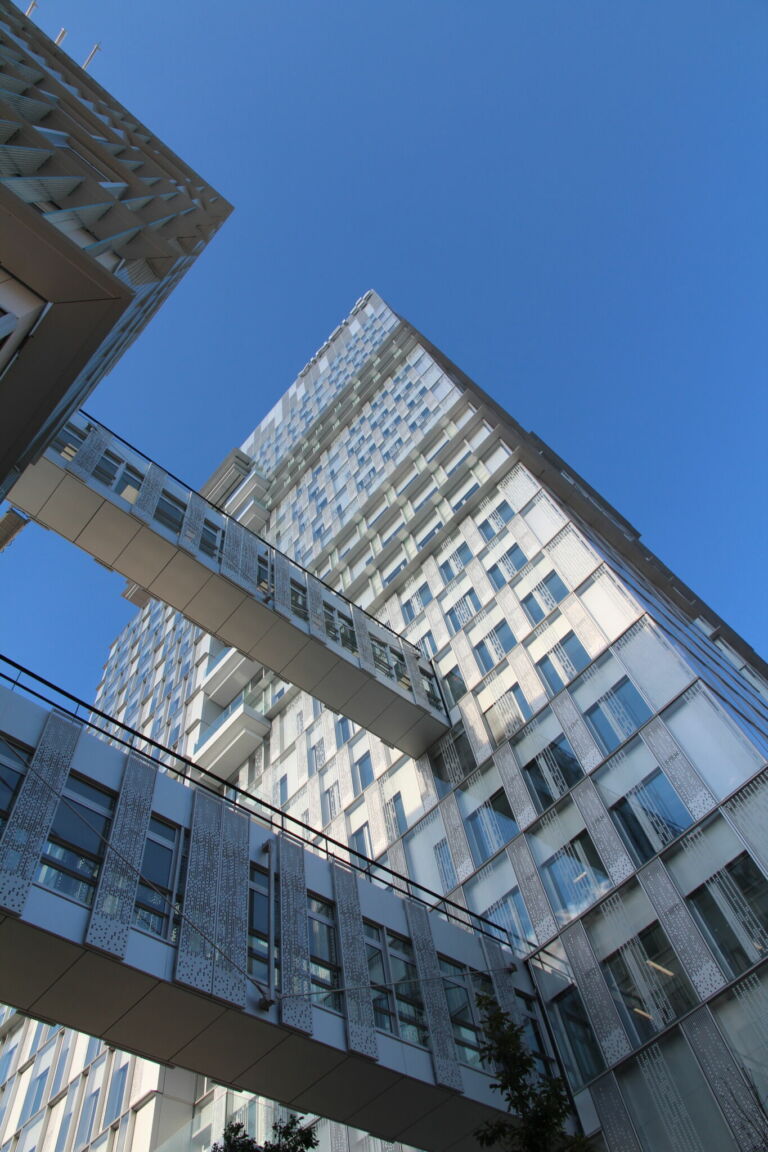SunEwat
The perfect balance between efficiency and aesthetics.
SunEwat is the one-stop shop for photovoltaics-embedded glass solutions, developed in partnership with solar providers. SunEwat boasts environmental performance and efficiency ratings consistent with Nearly Zero-Energy Building (NZEB) standards.
Concept
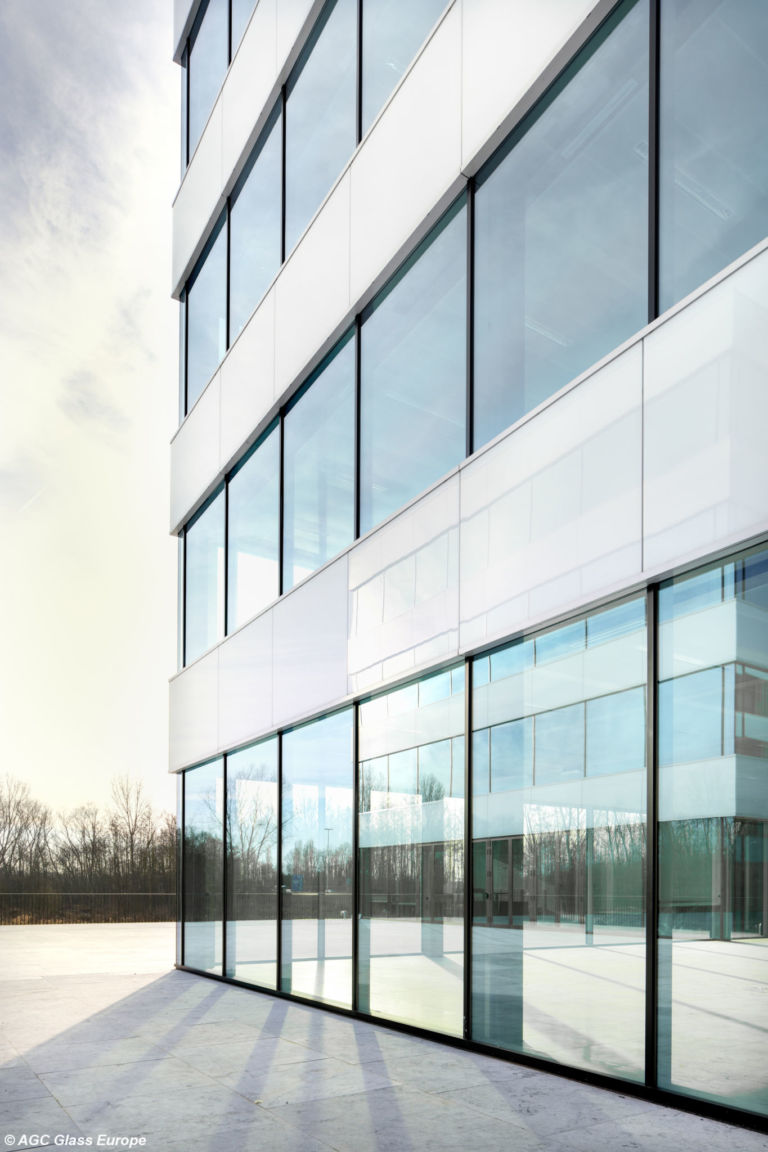
SunEwat focuses on efficiency, delivering opaque and aesthetically pleasing integrated solutions for spandrels and cladding components with a payback period similar to that of traditional rooftop photovoltaic units.
No compromise on aesthetics: Facade glass can be active with no negative visual impact whatsoever.
Competitive pricing: Deploying AGC Glass Europe’s innovative technologies in energy-generating facades means record low payback periods.
Building autonomy: Sensors built into the insulating glass unit can activate the building management system.
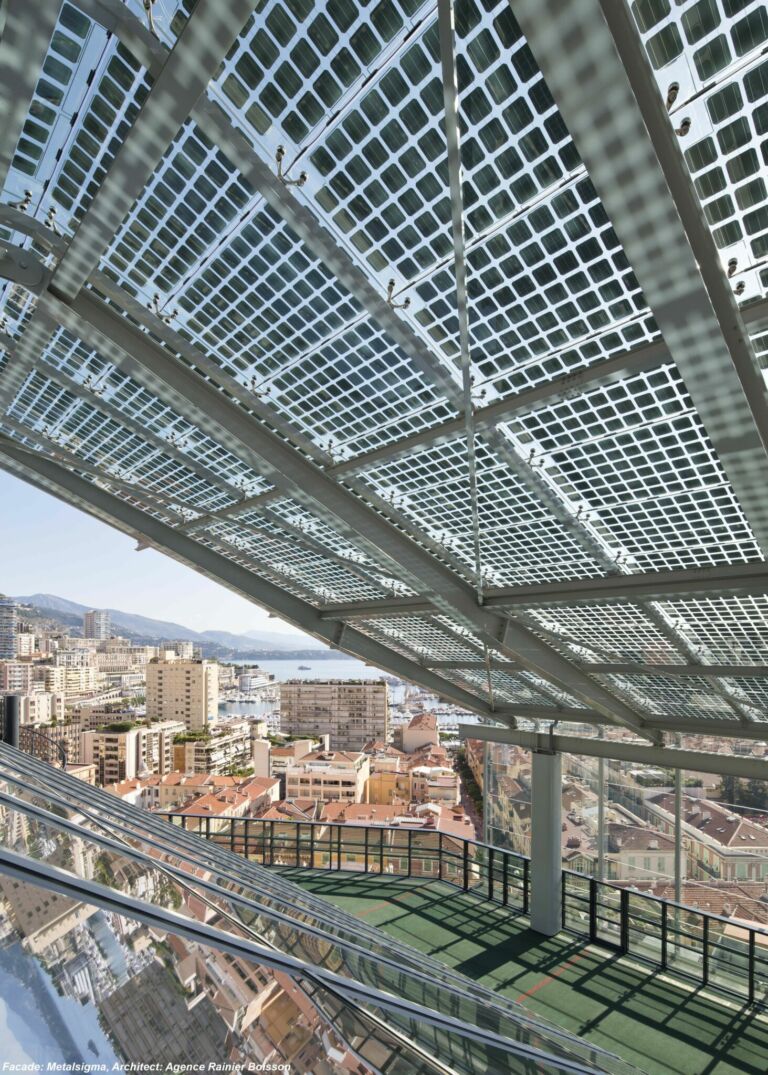
By enabling architects and designers to take an artistic approach to the vision glass elements as well as the spandrels and cladding components, SunEwat delivers elegant solutions that showcase the use of green energy while maintaining the glazing’s transparency and functionality.
Fully customisable: Architects and designers can arrange and deploy glass sizes and photovoltaic cells as they wish in order to create their own original designs.
Corporate social responsibility: Promoting a good corporate reputation through an eco-friendly building.
Total service
Glass composition parameters, glass module design, ultra-realistic simulation of cells, quick prototyping, ROI calculation.

Solar study of the facade to define the quantity and type of energy-generating glazing required in order to be an energy-efficient building.
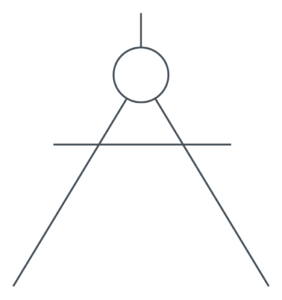
Facade integration, full system design, installation supervision, commissioning and monitoring.
Our Partners
AGC Active Glass works closely with specially selected partners for the production of the SunEwat range. By combining their solar energy knowledge with AGC Glass Europe’s expertise, we can deliver the widest range of photovoltaics-embedded solutions.
More about our partners:
Discover our latest projects
